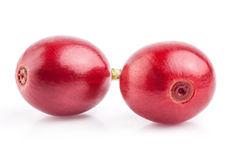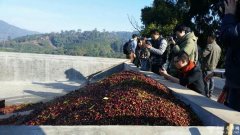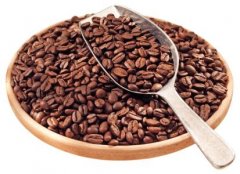A brief introduction to the characteristic treatment of the flavor and taste of Costa Rican coffee St. Roman Manor

After the coffee fruit is peeled, the peel and pulp are recycled as feed for livestock or converted into organic fertilizer and coffee bean dryer fuel. It can be said that Costa Rica complies with the requirements of preserving the natural environment at every stage of coffee production.
Among Costa Rica's many excellent producing areas, there is one famous producing area that stands out-Tarrazu, also known as Tarrazu. Tarajoo is renowned in the world of fine coffee and is one of the world's leading coffee producers. In the 2014 COE competition, 17 of the 23 listed beans came from Tarasu. Tarasu is located in the fertile volcanic region of Central America, where there is a humid climate and fertile volcanic soil, abundant rainfall throughout the year, high altitude, and dense forest natural shade, providing a unique growing environment for coffee growth. No pesticides or artificial fertilizers are used during cultivation. Nearly 95% of the coffee beans produced in Tarazhu Alpine are extremely hard beans (SHB), generally grown above 1500 meters above sea level.
Currently Tarazhu Cooperative has 26 member estates. One of the most prestigious coffee estates in Tara Pearl is La Minita Estate. Lamini produces about 1 million pounds of coffee beans a year, and the beans produced on the estate are carefully selected to remove defects. Only 15% of the beans can be stamped with Lamini Estate, and the rest goes to the coffee market. But the price of these coffees coming into the market is still higher than that of other coffee beans grown in Central America. Lamini Tower's strict management of all aspects of coffee production has established a world-class reputation and can be called a world-famous coffee estate.
There are many kinds of coffee here, but its industrial policy is large and cheap, so there are not many excellent coffee, but it is a good choice to mix other coffees.
One of the most famous is Mountain Costa Coffee, which tastes mellow and neutral. It can be boiled directly or mixed with other kinds of coffee beans. It is also a good choice.
Excellent Costa Rican coffee is known as "extra hard beans" and can grow at altitudes above 1500 meters. Altitude has always been a problem for coffee growers. The higher the altitude, the better the beans, not only because higher altitudes increase the acidity of the beans and thus enhance the flavor, but also because the lower night temperatures at higher altitudes can slow down the growth of trees and thus enhance the flavor of the beans. In addition, due to the high altitude drop caused by sufficient rainfall, coffee tree growth is very favorable.
Costa Rican coffee is all Arabica beans, washed, it is bright style, full of aroma, clear as wind chimes in the breeze, and mild acid, sweet quite good. Because of the sweet taste, even if the coffee is cold, it is also very good to drink, which is a major feature of Costa Rica coffee. Therefore, it is recommended that you taste Costa Rican coffee with only a small amount of sugar and creamer in order to enjoy its girlish pure flavor.
Costa Rica has many excellent producing areas, and Costa Rica's high-quality producing areas have a common understanding of quality, that is, the use of mature coffee fruit to ensure the production of high-quality coffee.
Generally speaking, the post-processing of harvested coffee fruits uses a lot of water, but Costa Rica's advanced production equipment saves water resources to the greatest extent, and at the same time uses a circulating filter device to treat the wastewater from washing coffee beans, so that the wastewater is purified into clean water to prevent pollution of the local soil environment.
Important Notice :
前街咖啡 FrontStreet Coffee has moved to new addredd:
FrontStreet Coffee Address: 315,Donghua East Road,GuangZhou
Tel:020 38364473
- Prev

A brief introduction to the Origin and Development of Coffee Variety cultivation in Saint Roman Manor, Costa Rica
During the harvest season, the sugar content of the fruit is measured by the sugar meter (Brixmeter) often equipped by the wine industry, and the best time and treatment are determined according to the brix sugar content. Only those with more than 20% sweetness will be exposed to the sun. The Brix value of general fruit is 14 for apple, 12 for lemon and 18 for passion fruit, but the coffee cherry of Fenghuang Manor can reach 21-22.
- Next

The mild taste of the boutique coffee bean producing area of Saint Roman Manor in Costa Rica is characterized by the grinding of flavor and taste.
Coffee is an important export product of Costa Rica, which earns a lot of foreign exchange for the country every year and is vividly called the golden seed. Costa Rica's unique natural conditions are very suitable for growing high-quality coffee varieties. Although the output is small, Costa Rican coffee always occupies an important position in the international boutique coffee market with its excellent quality. The Colombian government attaches great importance to the development of the coffee industry, except that it is prohibited by law.
Related
- Does Rose Summer choose Blue, Green or Red? Detailed explanation of Rose Summer Coffee plots and Classification in Panamanian Jade Manor
- What is the difference between the origin, producing area, processing plant, cooperative and manor of coffee beans?
- How fine does the espresso powder fit? how to grind the espresso?
- Sca coffee roasting degree color card coffee roasting degree 8 roasting color values what do you mean?
- The practice of lattes: how to make lattes at home
- Introduction to Indonesian Fine Coffee beans-- Java Coffee producing area of Indonesian Arabica Coffee
- How much will the flavor of light and medium roasted rose summer be expressed? What baking level is rose summer suitable for?
- Introduction to the characteristics of washing, sun-drying or wet-planing coffee commonly used in Mantenin, Indonesia
- Price characteristics of Arabica Coffee Bean Starbucks introduction to Manning Coffee Bean Taste producing area Variety Manor
- What is the authentic Yega flavor? What are the flavor characteristics of the really excellent Yejasuffi coffee beans?

